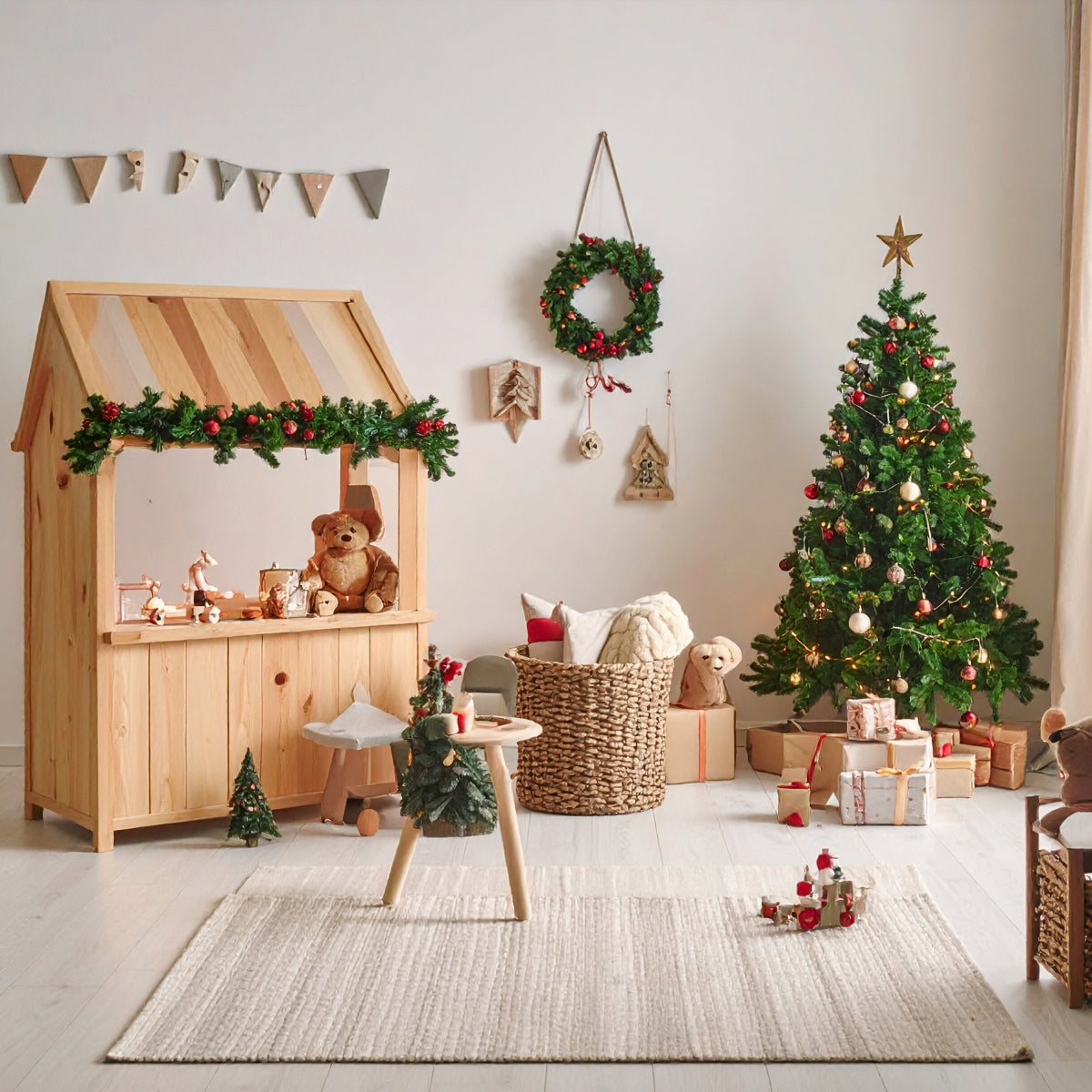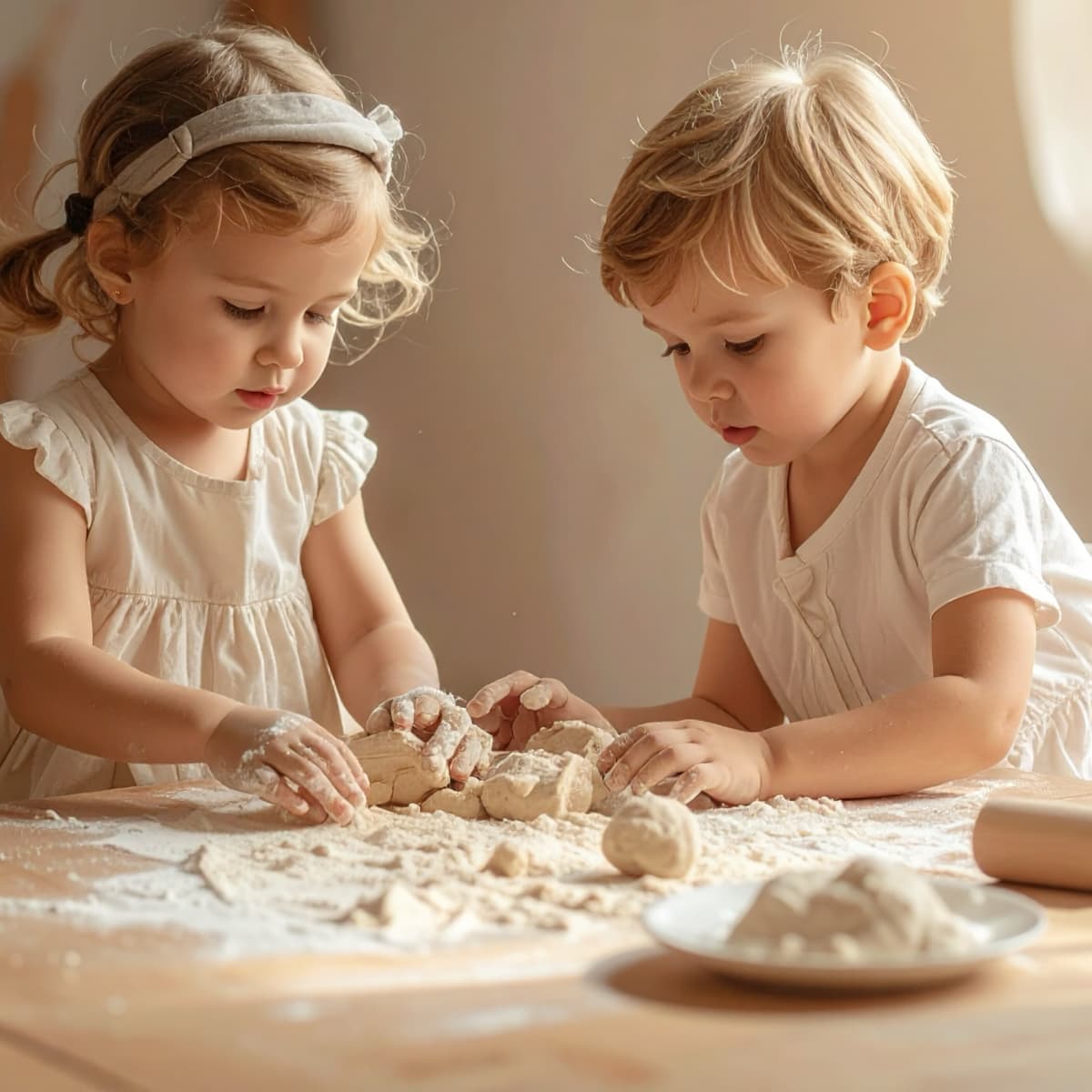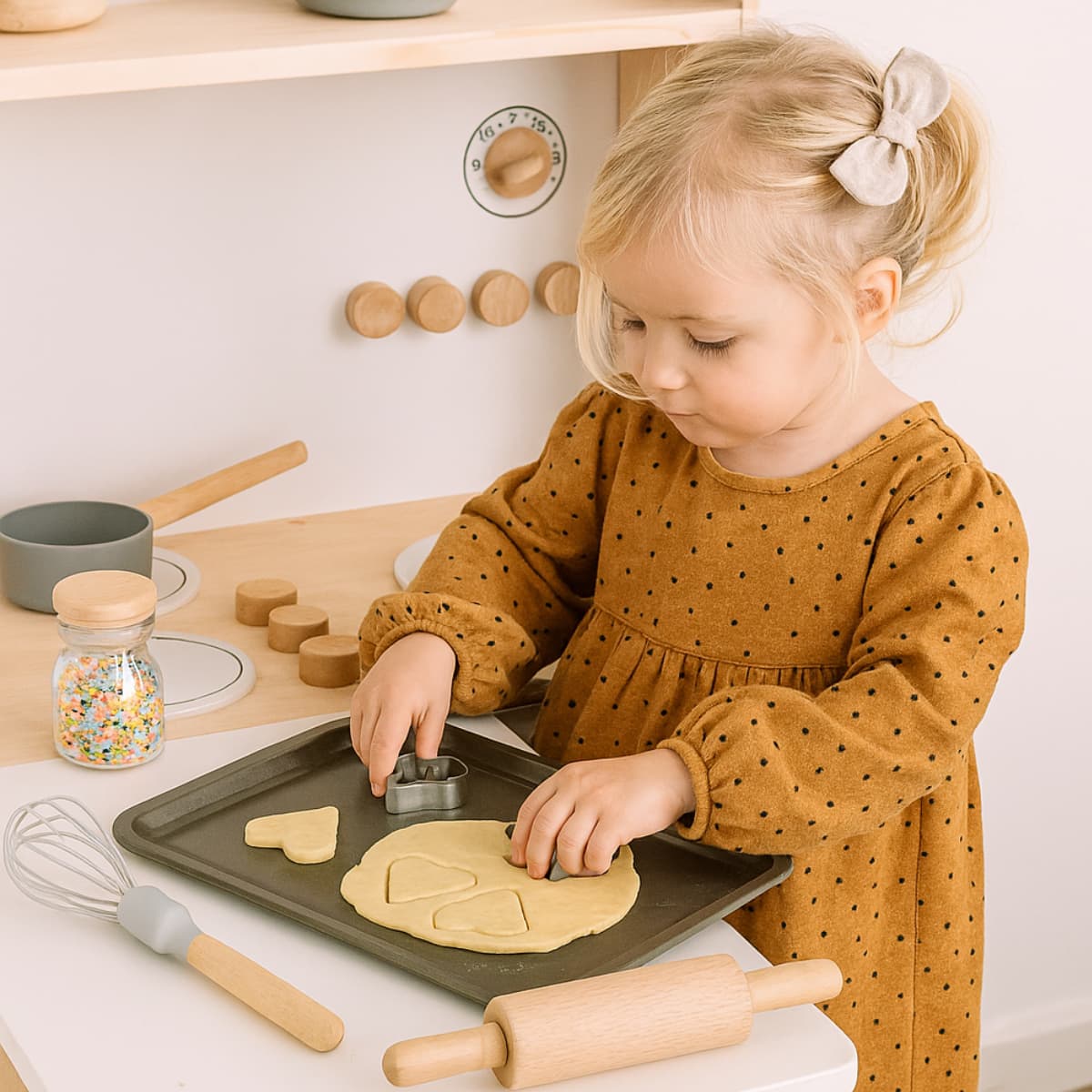
Maple
Maple Wood – Properties, Uses & Special Features
Maple wood is one of the most popular native hardwoods, known for its light appearance, fine texture, and versatile applications – especially in furniture making and high-quality wooden toys.
Origin & Species
-
Genus: Acer (maple)
-
Distribution: Europe, North America, Asia
-
Main species: Sycamore maple, Norway maple, Sugar maple
-
Wood type: Hardwood, typically light-colored sapwood is used
Appearance & Structure
-
Color: Creamy white to yellowish, sometimes slightly reddish
-
Grain: Fine and even
-
Surface: Smooth, well polishable, silky sheen
-
Aging: Slight yellowing possible due to UV exposure
Technical Properties
| Feature | Description |
|---|---|
| Hardness | Medium to hard, approx. 30 N/mm² (Brinell) |
| Workability | Excellent for sanding, staining, and turning |
| Elasticity | Well-suited for flexible applications |
| Durability | Limited weather resistance – ideal for indoor use |
| Drying | Even, but risk of cracking if stored improperly |
Uses
-
Furniture: Tables, dressers, shelves
-
Musical instruments: Guitars, violins, drums
-
Toys: Building blocks, puzzles, grasping toys
-
Kitchenware: Wooden spoons, cutting boards
-
Handcrafts: Turned objects, inlays
Advantages
-
Light, friendly appearance
-
Good strength & elasticity
-
Pleasant texture, free from harmful substances
-
Ideal for educational toys & learning materials
Disadvantages
-
Not suitable for outdoor use
-
Tends to yellow under direct sunlight
-
Risk of cracking if dried improperly
Conclusion
Maple wood is a versatile, high-quality material that impresses with its aesthetics and technical properties. Especially in the field of educational toys, it offers ideal conditions – natural, durable, and child-safe.





